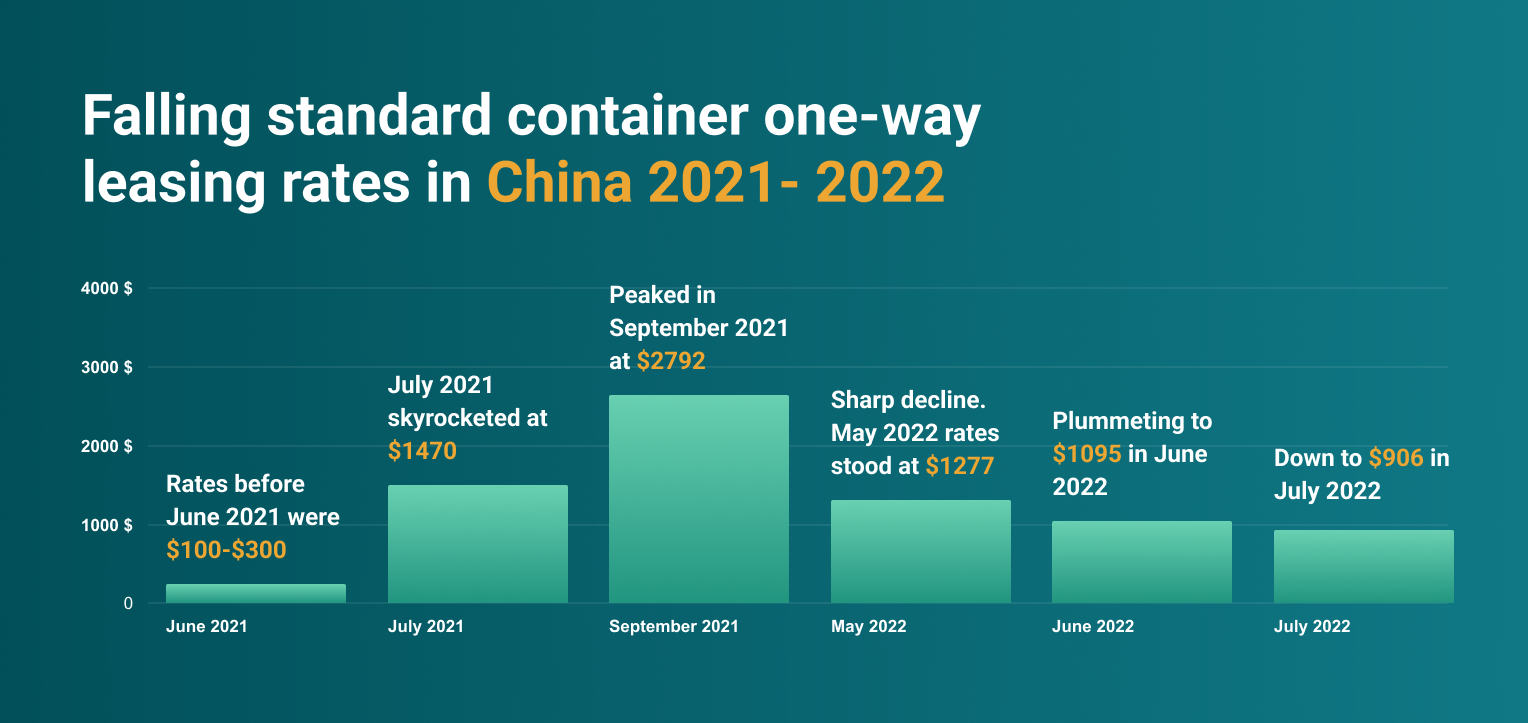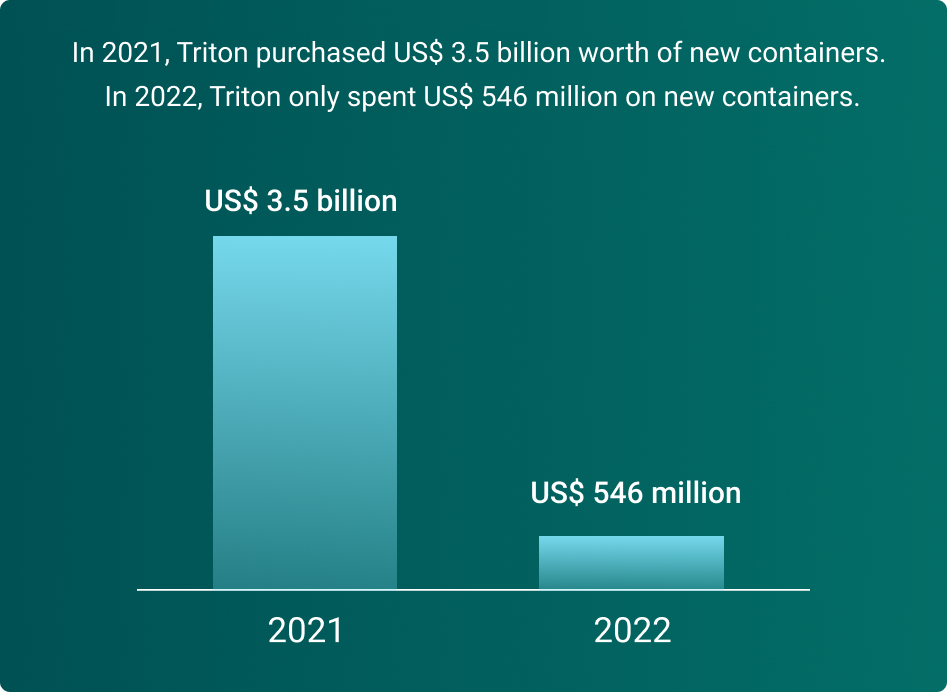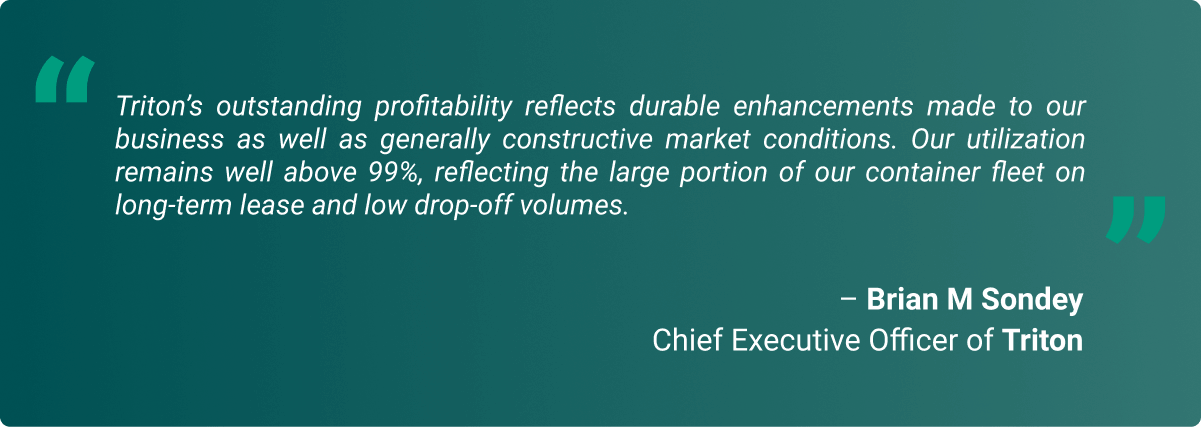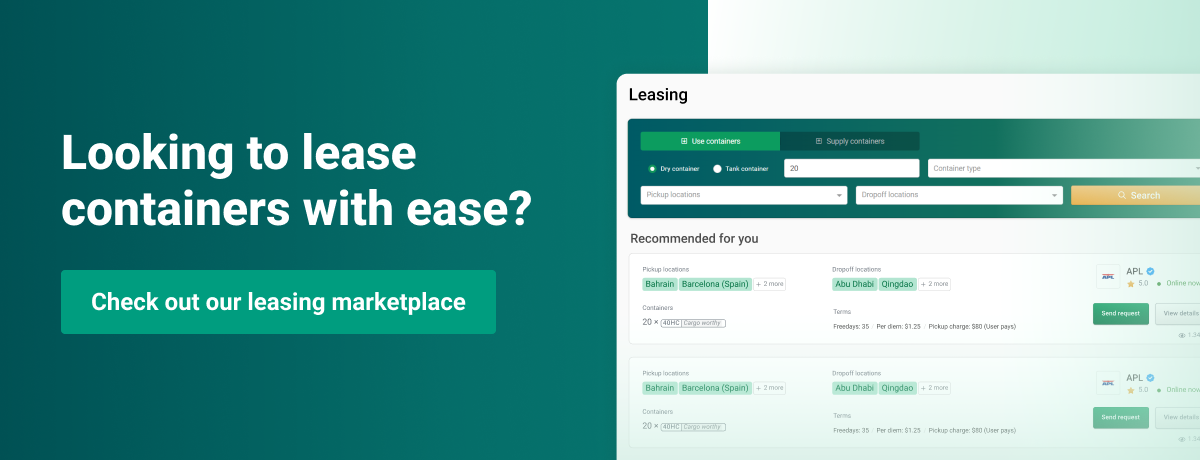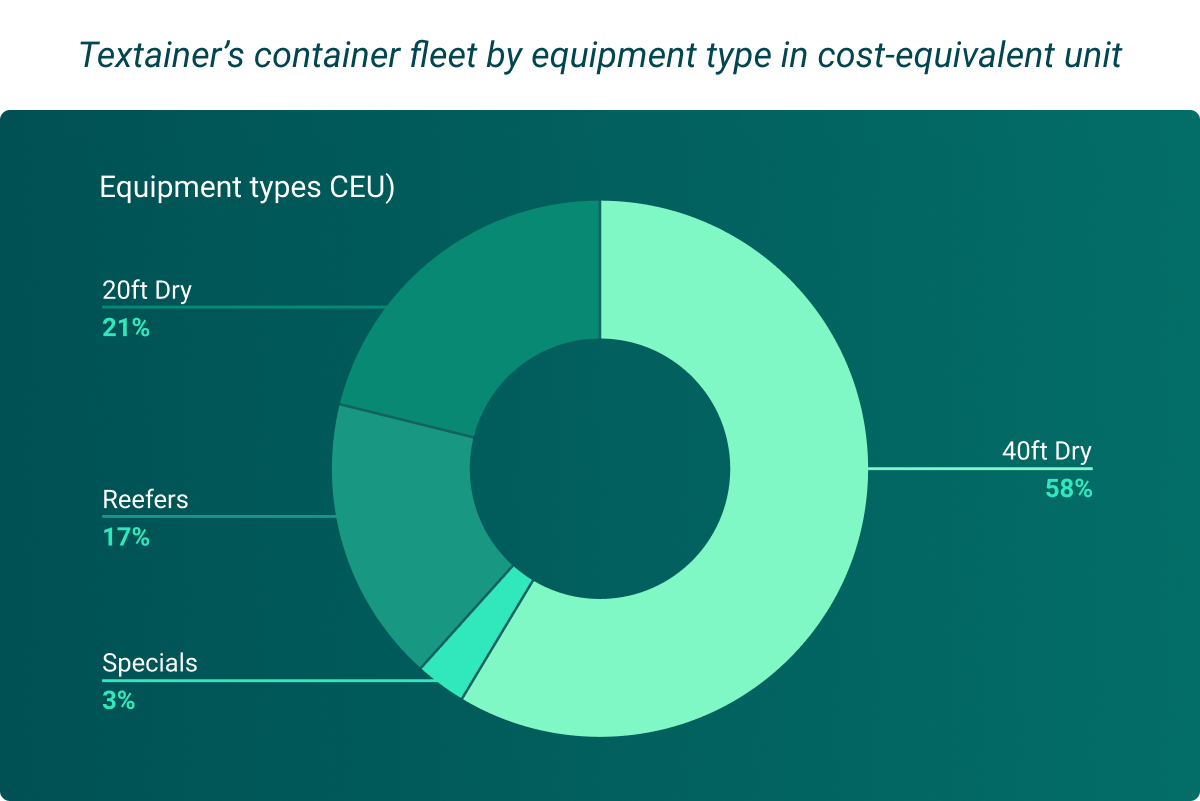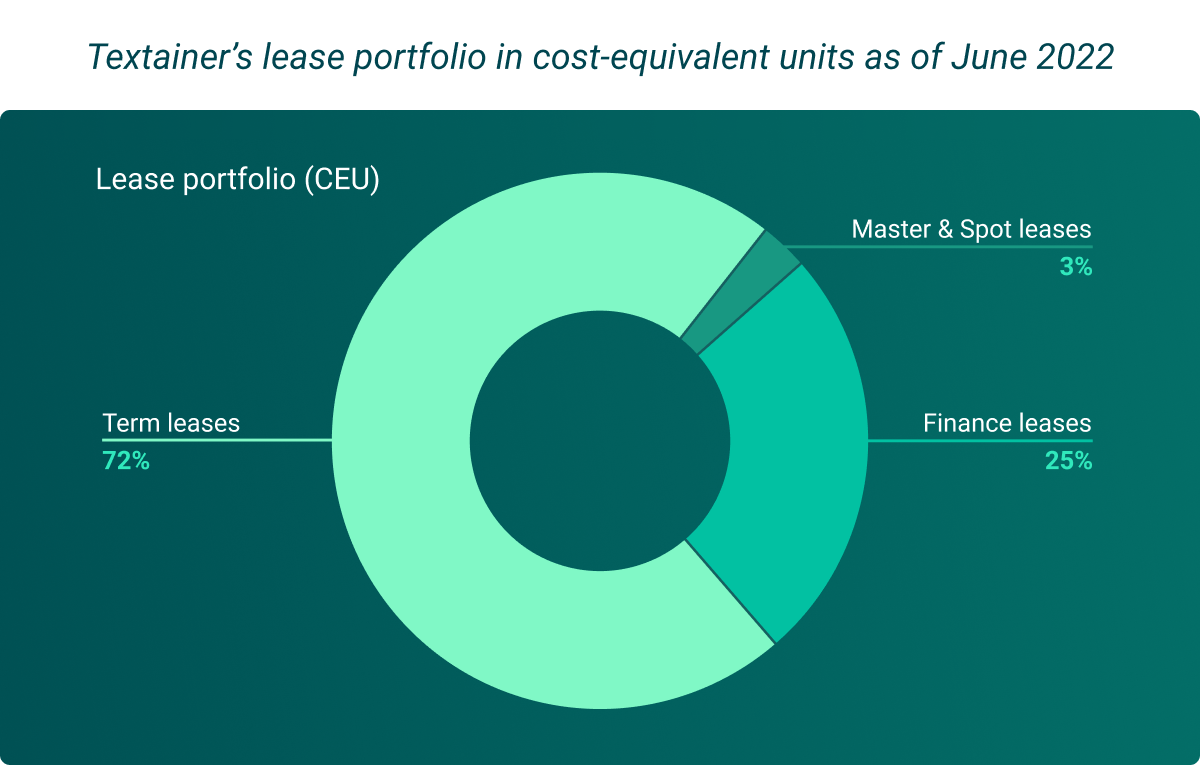Container shipping accounts for 90% of global trade. Thus, the movement of the container affects world economies and consequently, our daily lives and businesses.
And because almost 52% of the world’s containers are owned by leasing companies, it’s crucial we find out what challenges these international stakeholders face and how they overcome them.
To learn from the top leasing companies, we compiled a quick analysis of their:
– Container ownership and management
– Leasing portfolios
– Business operations in 2022
A recap of the leasing market in 2021
#1 In 2021, the global container fleet grew by 15% to stand at 51.4m TEU – that’s 3x as much year-on-year compared with the pre-Covid average annual growth of 5%.
“It’s an exceptional growth caused by the severe disruptions in global supply chains,” said Danny den Boer, Director of Sales & Trading, SeaCube Containers at a webinar hosted by Container xChange.
#2 In 2021, the global market size for container leasing was valued at $5.2 billion. It’s expected to reach $7.1 billion by 2026, growing annually by 6.4%.
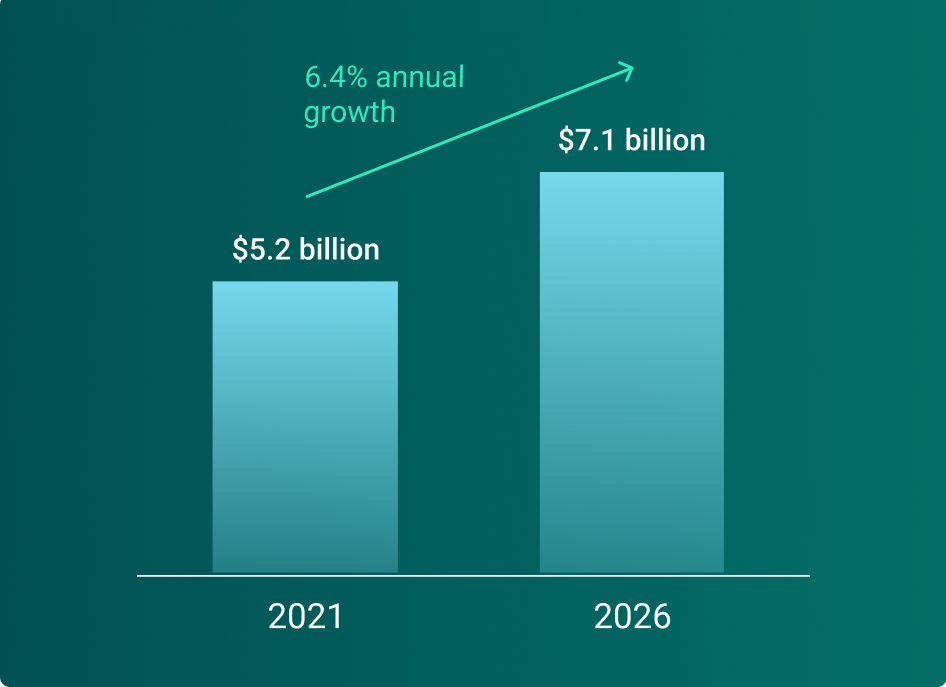
As we know, the supply chain is replete with disruption. But amid the snags – geopolitical as well as circumstantial, how is the industry still growing? Well, this growth has been brought about by shippers and carriers choosing to lease containers. Every enterprise in our industry (be it small, medium or large) acknowledges that they work through consistent uncertainties. Which means, they need to stay prepared at all times. Is it then their conscious strategy to lease containers instead of buying? If so, what benefit can they avail through it? For starters, they gain flexibility and save money.
#3: Out of the 52% of the annual fleet, the top 5 container lessors accounted for 86% of the market as of the end of 2021.
As we know, supply chain is replete with disruption. But amid the snags – geopolitical as well as circumstantial, how is the industry still growing? Well, this growth has been brought about by shippers and carriers choosing to lease containers. Every enterprise in our industry – be it small, medium or large – acknowledges that they work through consistent uncertainties. Which means, they need to stay prepared at all times. Is it then their conscious strategy to lease containers instead of buying? If so, what benefit can they avail through it? For starters, they gain flexibility and save money.
Clearly, the top container leasing companies had been investing and expanding more – and for a good reason. But then 2022 has been an extremely different year. So what are they doing now with these fresh sets of disruptions?
A brief snapshot of the market in 2022:
During the pandemic, there was a shortage of containers. But post pandemic, the situation has reversed. The surplus of containers is causing the container prices and leasing rates to drop.
Still, container leasing companies provide a steady stock of containers to shippers, freight forwarders, and carriers. It’s expected that lessors will continue rationalizing new container investments and thus, improve lease quality in pursuit of stable long-term returns with reduced volatility.
Overview of container ownership in TEU
These top 10 leasing companies have dominated the market for years, and seem to be growing still.
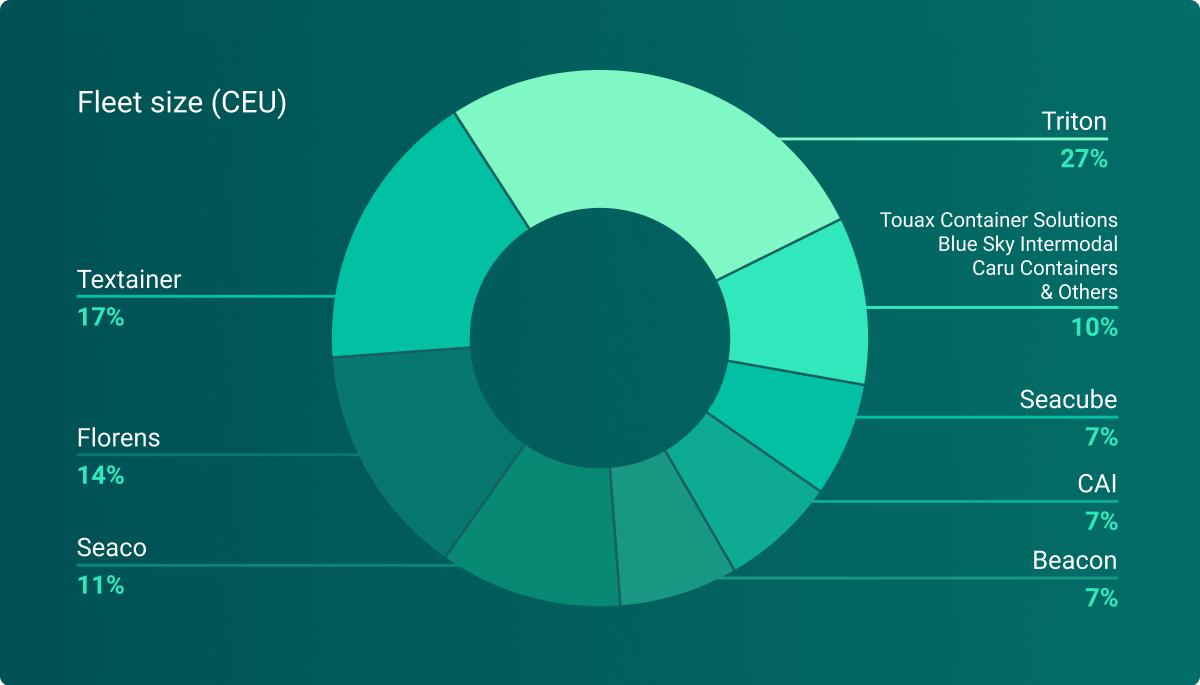
Pie chart of container fleet per the top 10 leasing companies in 2022
In our report, we have outlined in detail many significant business decisions in terms of expansion and diversification. We also theorize the causes behind said decisions.
Triton International
Triton International is the world’s largest lessor of intermodal containers and equipment. At present, Triton accounts for almost 1/3 of the containers owned by container leasing companies.
Year founded: 1980
Headquarters: Hamilton, Bermuda
Container fleet in TEU: $7.3 million
Percentage owned of global leasing container fleet: 27
Total revenue in 2021: $153 billion
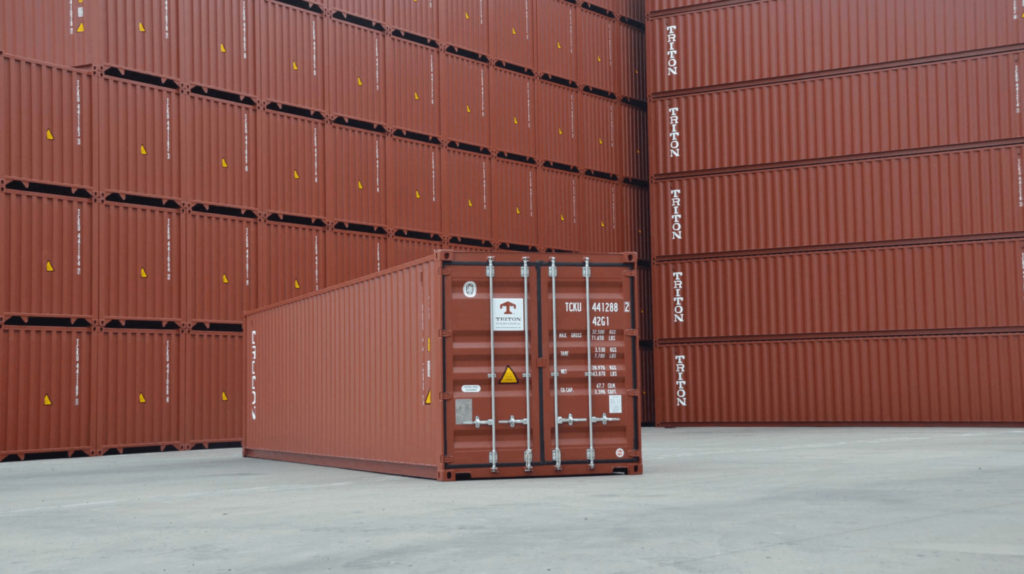
Container fleet growth
While Triton continued to increase its container fleet in 2022, the company decreased its spending on new containers by 84%. And focused instead on buying back some of its own stock.
According to World Cargo News, “The sharp drop in container purchasing certainly does not reflect any downturn in the leasing business”, but a variety of financial decisions based on long-term investments through their previous years’ financial activity.
Still, Triton increased its fleet by 7.14% overall, increasing its leasing fleet by 7.26% and decreasing its trading fleet by 1.5%.
Container fleet by equipment type
The company increased its number of dry containers, tank containers and container chassis.
Leasing portfolio
Long-term leases are the most valuable leasing types for Triton.
Q2 movement and decisions
Triton repurchased 1.8 million common shares during the second quarter of 2022 and has repurchased an additional 0.9 million common shares through July 26, 2022. Additionally, the company also increased its share repurchase authorization back to $200 million in July.
According to Triton’s Chief Executive Officer, “New container prices have decreased from their peak level reached last year, but remain historically high, with factories quoting in the $2,600 range for a 20 ft dry container, providing strong support for lease rates and disposal prices. We have also locked in low long-term interest rates through our extensive refinancing activity in 2020 and 2021.”
Textainer Group
Year founded: 1979
Headquarters: Hamilton, Bermuda
Container fleet in TEU: $4.5 million
Percentage owned of global leasing container fleet: 17
Total revenue in 2021: $853.36 billion
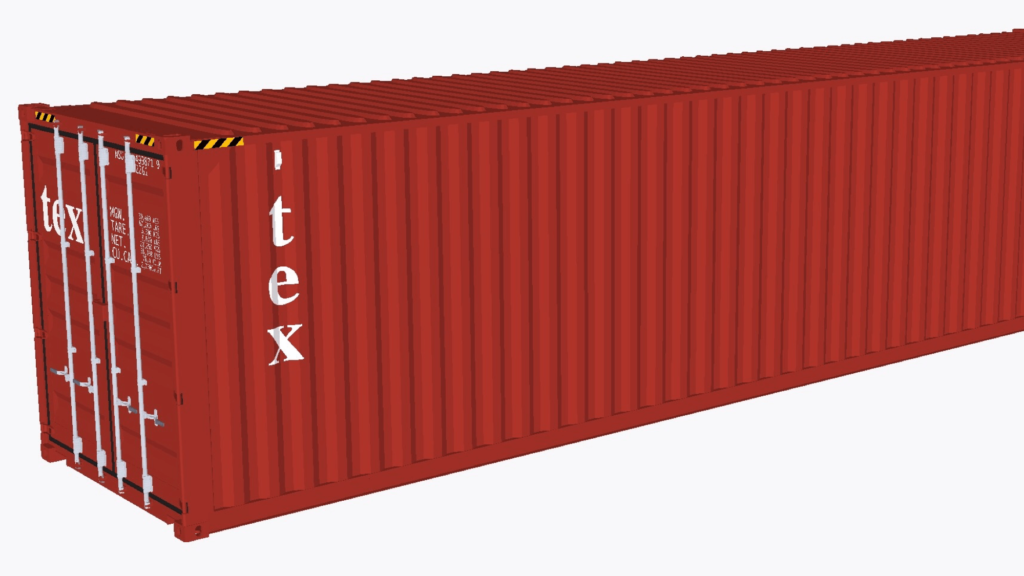
While it is the second-largest leasing company in terms of TEU, Textainer is also one of the biggest sellers of used containers. Textainer’s at present portfolio consists mainly of 40 DC and 20 DCs, but also with a large portion of reefers.
Fleet size growth
2022 vs 2021
In 2022, Textainer reported that the company grew its fleet size by 10%. This is 3% more than Triton.
Next, let’s take a look Textainer’s fleet size growth over the past 10 years, from 2010-2022:
Textainer has grown its fleet massively over the span of 10 years, putting more emphasis on owning containers rather than just managing them.
Leasing portfolio: Why long-term leases work
Textainer has a young fleet with an average age of 4.6 years.
Its fleet generates a stable cash-flow from a lease portfolio with a mix of 97% long-term fixed-rate leases.
The average remaining tenor of the entire lease portfolio is 6.7 years.
So why is long-term leasing working for them? According to their Q2 report, “Controlled levels of annual lease maturities guarantee stable cash flows. Moreover, current maturities have a lower financial impact given the much lower historical original cost of these containers.
The current strong market offers significant opportunities to extend maturing leases for continued high utilization.”
Total leasing revenue
Textainer’s total lease rental income for the quarter increased $4.5 million from the first quarter of 2022 primarily due to an increase in fleet size.
Total lease rental income after 6 months (in June 2021) = $356,678
In June 2022: $401,950
And their last twelve-month (“LTM”) lease rental income is $796 million.
Source: Textainer Group Second-Quarter 2022
Container utilization
Average and ending utilization rate for the second quarter of 2022 are 99.6% and 99.5%, respectively.
Q2 movement / decisions
During Q2 2022, Textainer added $230 million of new containers for a total of $727 million through the first half of 2022, primarily assigned to long-term finance leases.
They also increased their “direct container expense” by $1.3 million from the first quarter of 2022., This was primarily due to a higher maintenance, handling and storage expense. Resulting from slightly increased redeliveries of predominantly older, sales age containers associated with their increased resale activity.
But Textainers success can’t be attributed to leasing alone. Textainer has also been interested in the secondary container market. As World Cargo News had reported, “At the moment, the used container market is so strong that Textainer is able to sell 14-year-old boxes for more than their original purchase price.”
Florens Asset Management
Year founded: 1987
Headquarters: Hong Kong
Container fleet in TEU: $3.91 million
Percentage owned of global leasing container fleet: 14
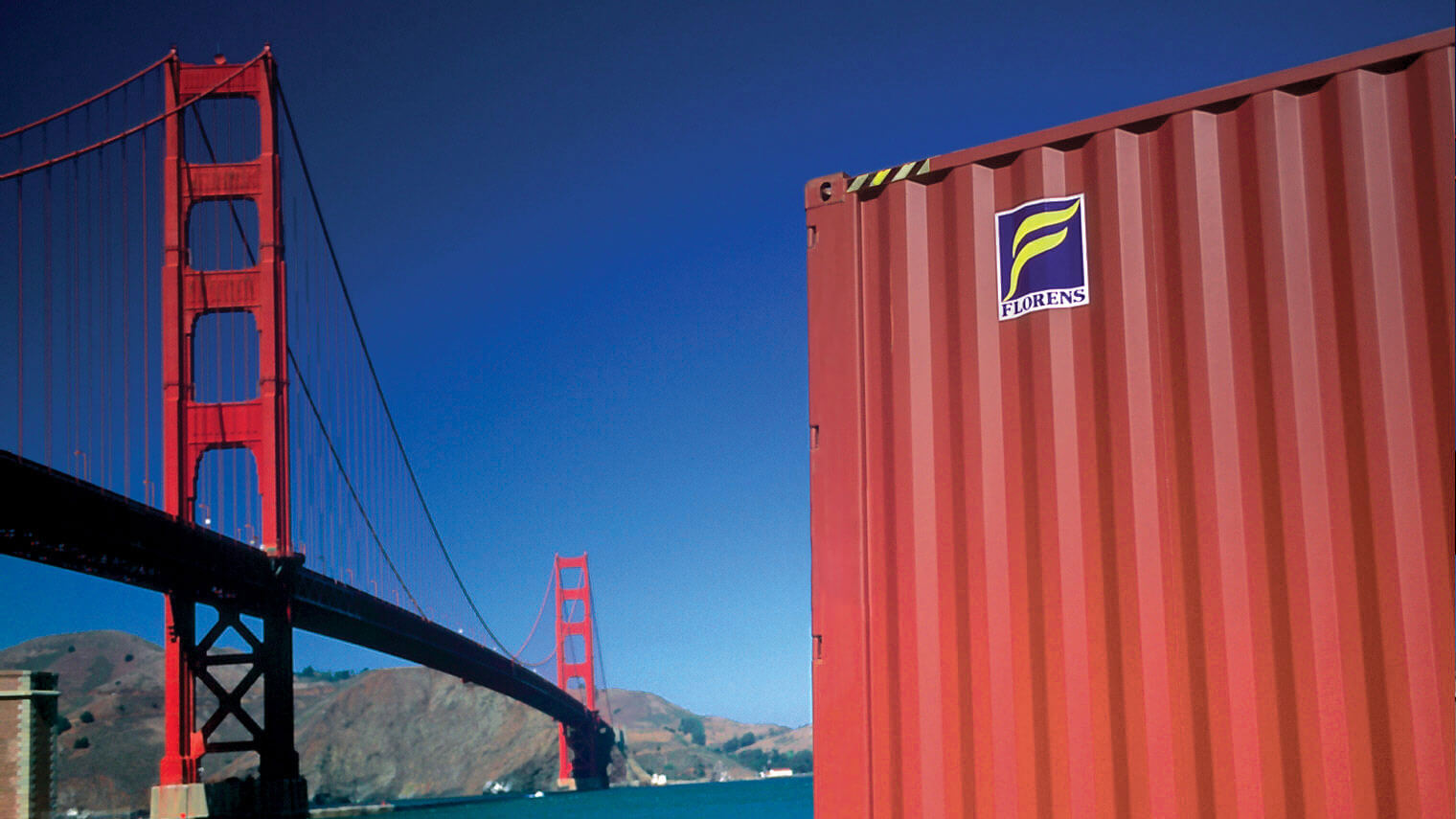
Florens is the third-largest container leasing company with a fleet of 3.9 million TEUs. With 20+ offices in 10 countries, Florens has an active presence in America, Europe, and Asia. The leasing company is a wholly-owned subsidiary of COSCO Shipping.
It has captured about one-fifth of the global market with the world’s top 20 shipping lines as its customers.
Q2 movement / decisions
In 2022, Florens has collaborated with the world’s second-largest container manufacturing platform, – SINGAMAS – also affiliated to COSCO Shipping Development, to further underpin the industry chain advantage of leasing-manufacturing synergy’ to support the main business of shipping logistics.
“In addition, Florens is building a customer-centric digital service ecosystem through strategic leadership, improving operating and management capabilities through efficiency enhancement, and increasing returns on assets through value creation.” – Source: Market Screener
Seaco Global
Year founded: 1998
Container fleet in TEU: $2.4 million
Percentage owned of global leasing container fleet: 10
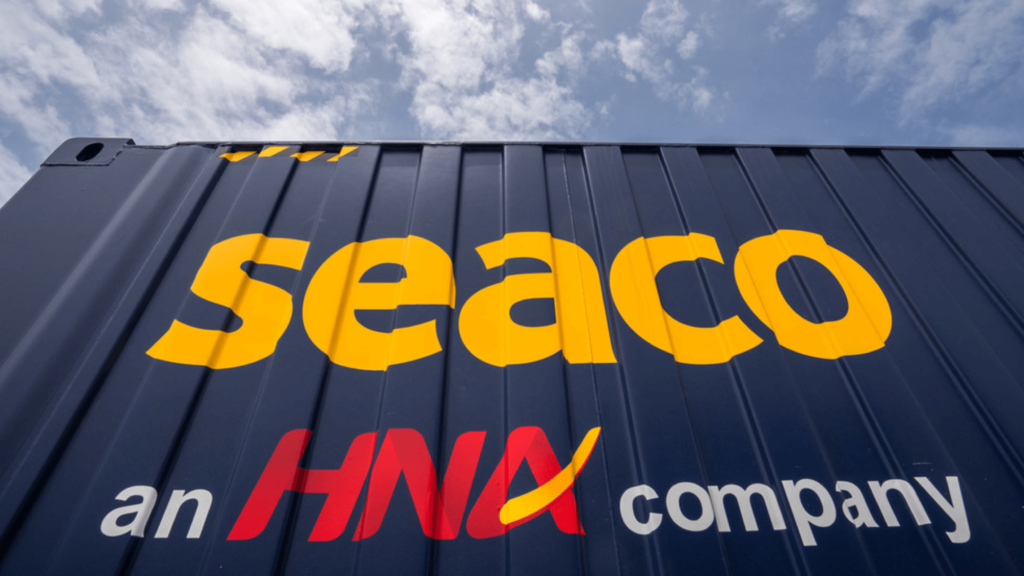
GE Seaco (joint venture between Sea Containers and GE) was incorporated in Barbados in 1998.
Seaco is also one of the world’s largest container leasing companies by CEU, providing a fleet of approximately 2.4 million TEU across a diversified fleet of Dry Boxes, Reefers, Tanks, Dry Specials and Swapbody containers. Seaco provides new container equipment for leasing to 800 customers worldwide, delivering container equipment from 189 port locations across 44 countries, operating 349 third-party depots and supported by an established network of 200+ Seaco employees across 24 Sales & Support offices, providing expertise in regional and global container leasing.
A unique position in the market:
While Seaco Global’s parent company is the Bermuda-based Global Sea Containers, Seaco Global owns various domestic leasing businesses in Germany and is one of the largest suppliers of Swapbody containers in the market. The containers are specially produced for use on German and Continental European roads. This gives Seaco Global the edge to monopolize aforementioned market but also reduce life cycle costs and fuel consumption since Swapbody containers are lighter in weight and easy to load and unload.
2022 movement / decisions
As of March 2022, Seaco Global opened its first permanent office in the Middle Eastern region of Dubai. This decision forms part of strengthening its worldwide presence but also recognizes Dubai as a potential, key manufacturing region – much like Mumbai and Shanghai.
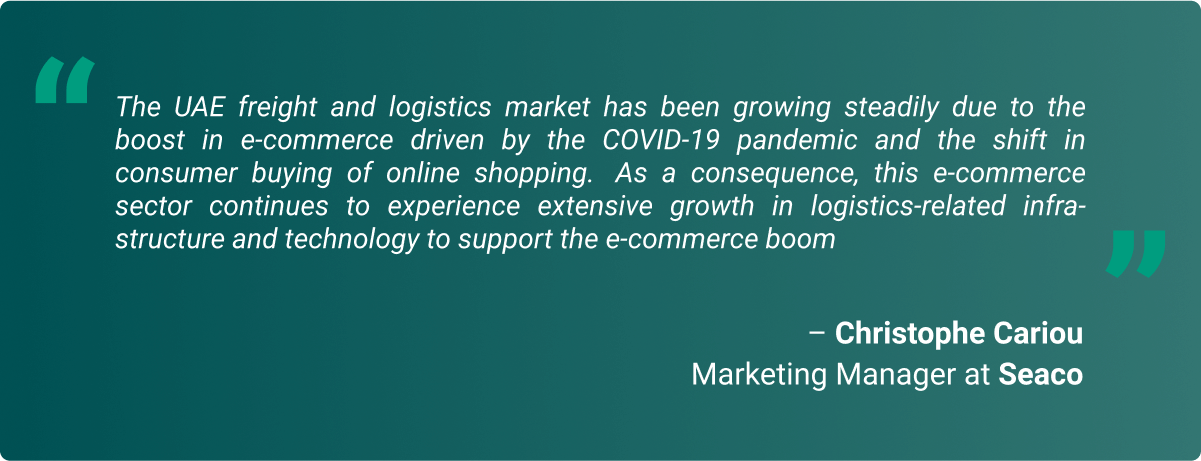
Beacon Intermodal
Year founded: 2008
Headquarters: Boston, USA
Container fleet in TEU: $1.8 million
Percentage owned of global leasing container fleet: ~7
Total revenue in 2021: $13 million
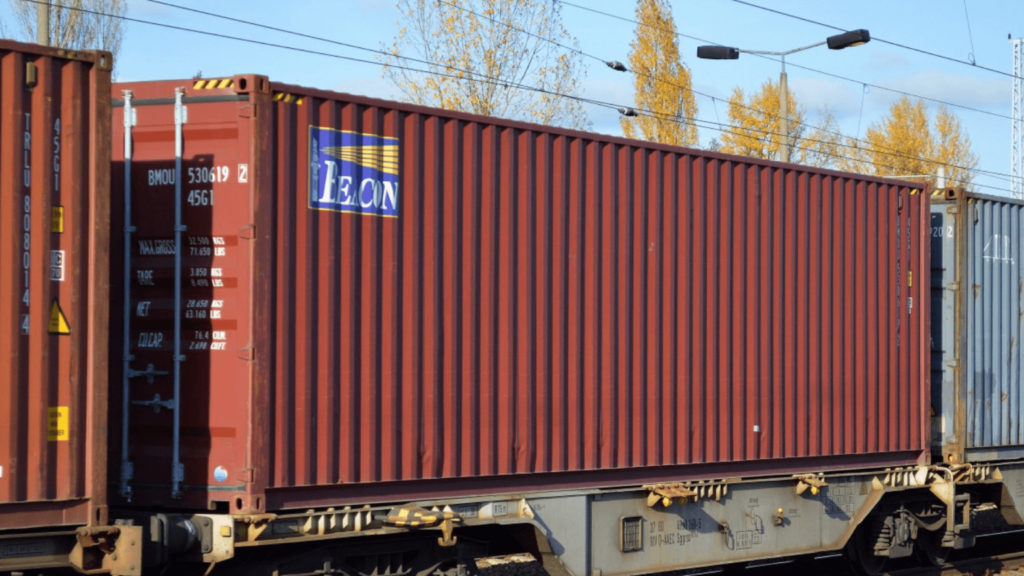
In 2015, Japanese conglomerate Mitsubishi HC Capital Inc acquired this North American leasing company to expand their opportunities and increase profits.
On its own, Beacon Intermodal is the fifth largest container leasing company.
Fleet & leasing portfolio overview
Average container age = 4.5 years
(one of the youngest fleets in the industry)
Average container utilization: 99%
50% of its fleet = life-cycle leases

CAI International
Year founded: 1989
Headquarters: San Francisco Bay Area, USA
Container fleet in TEU: $1.5 million
Percentage owned of global leasing container fleet: ~7
Total revenue in 2021: $294 million
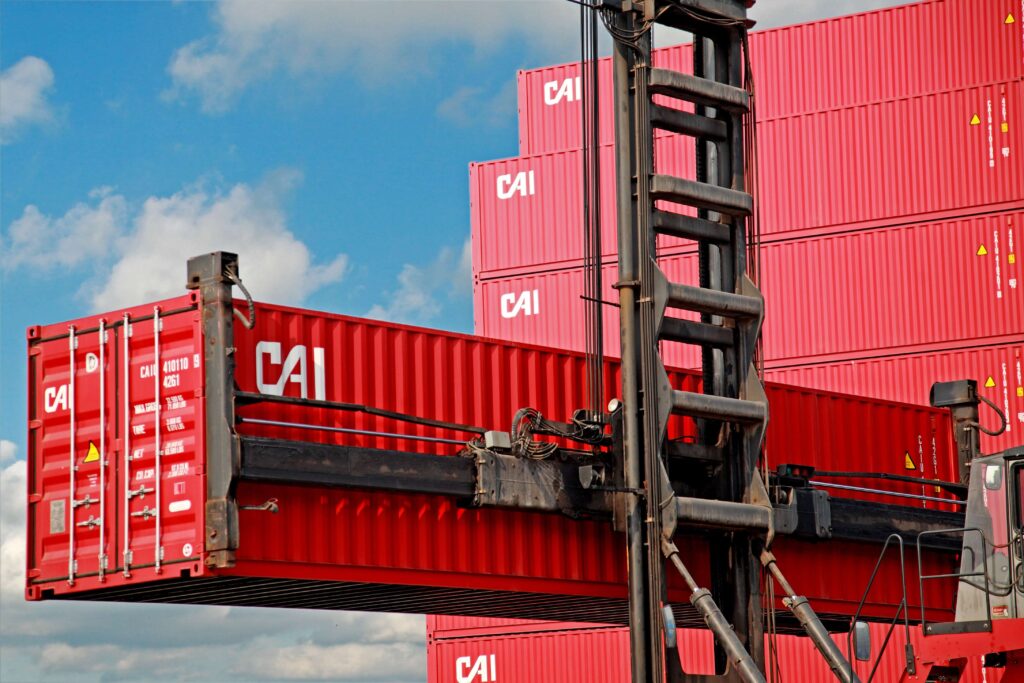
Mitsubishi acquired CAI International in November 2021 – 5 years after acquiring its now-sister company, Beacon Intermodal.
By acquiring CAI International, Mitsubishi HC Capital Inc (MHC) has increased the number of the Group’s owned marine containers to 14% with a combined fleet of 3.5 million TEU. This effectively puts them in the same rank in TEU as Florens.
While MHC develops other assets to soar beyond a leasing company, today MHC is one of the largest leasing companies in Japan by assets alone. Clearly, the brand realizes the scope that leasing companies entail Reportedly, MHC’s plan is to grow further and strengthen itself in the marine container leasing business.
“As one of the world’s leading container leasing companies, our stable supply of containers contributes to the expansion of global trade and a prosperous life for everyone.” – Source: Mitsubishi Integrates Report 2022
SeaCube Containers
Year founded: 2010
Headquarters: New Jersey, USA
Container fleet in TEU: $1.2 million
Percentage owned of global leasing container fleet: ~7
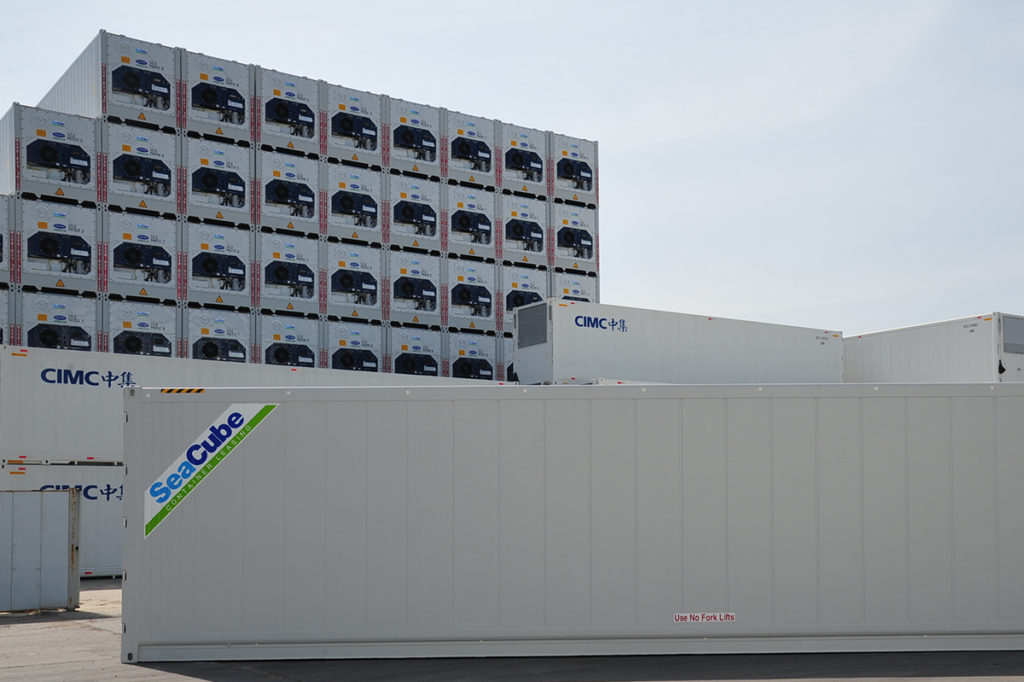
SeaCube is a world leader in the leasing and selling of reefers, with approximately 954,000 TEUs (as of 2019) . The company claims (and aims) to have the most advanced and eco-friendly refrigerated containers. For them, it’s the storing and transporting of refrigerated goods that takes prominence.
Seacube is expecting additional demand for reefer equipment, heading into the peak season of 2022 through to 2025. Especially since reefers come with gen-sets, they predict that the focus will be about sustainability goals and energy efficiency in the coming years. “SeaCube foresees that leasing decisions will be directly related to carriers’ decarbonisation goals.”
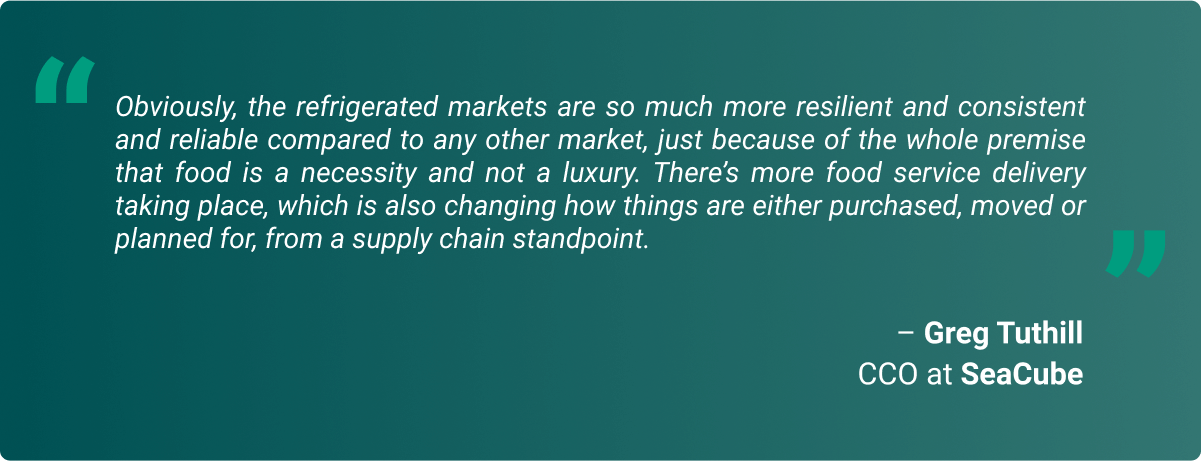
Touax Container Solutions
Year founded: 1975
Headquarters: Paris, France
Container fleet in TEU: $392,991
Percentage owned of global leasing container fleet: ~1
Total revenue in 2021: $127.8 million
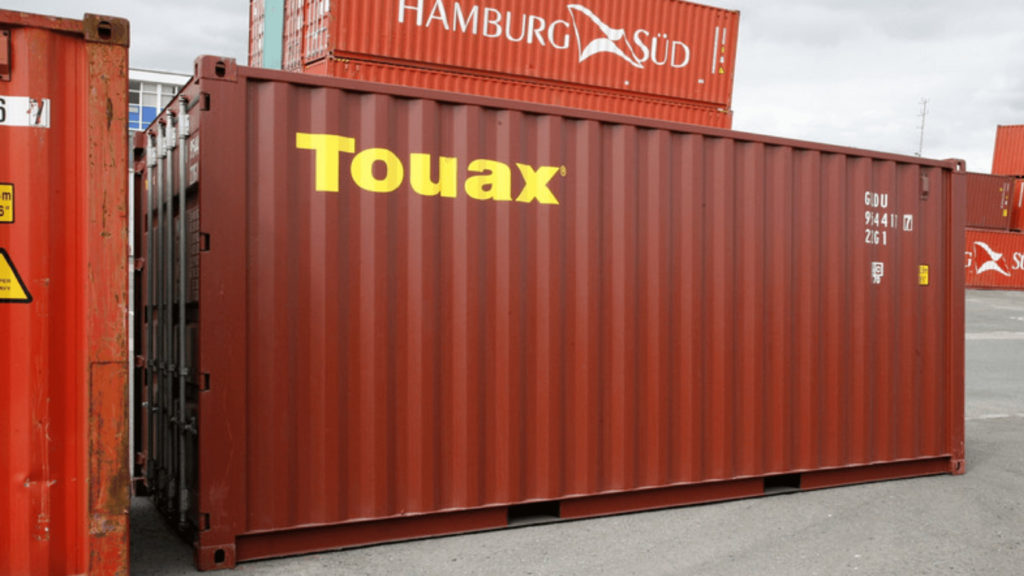
Touax is the No. 1 company in Europe for container leasing. But the company also deals in freight railcars and river barges.
Interestingly, they have decreased their container fleet in 2022. This could be similar to Triton’s decision to focus on existing long-term leases. Or perhaps – like Textainer – they also took advantage of the current high container prices and sold some of their boxes to invest the money elsewhere.
Leasing portfolio & utilization
Let’s take a closer look at their fleet; age, utilization, and length of lease as of June 2022:
-
The average age of the fleet stands at 11.1 years.
-
Average utilisation rate reached a high percentage of 98.4%.
-
The average length of lease is 6.8 years.
-
Leasing contracts of 3 to 10 years has peaked at 79%.
Total leasing revenue
By June 2022, Touax has restated revenue up by €25.2m (+157%), of which Leasing revenues went up to €73 million (+45%).
So while Touax’s container fleet has decreased, their leasing revenue has increased.
Blue Sky Intermodal
Year founded: 2003
Headquarters: Buckinghamshire, UK
Container fleet in TEU: $+300,000
Percentage owned of global leasing container fleet: ~1
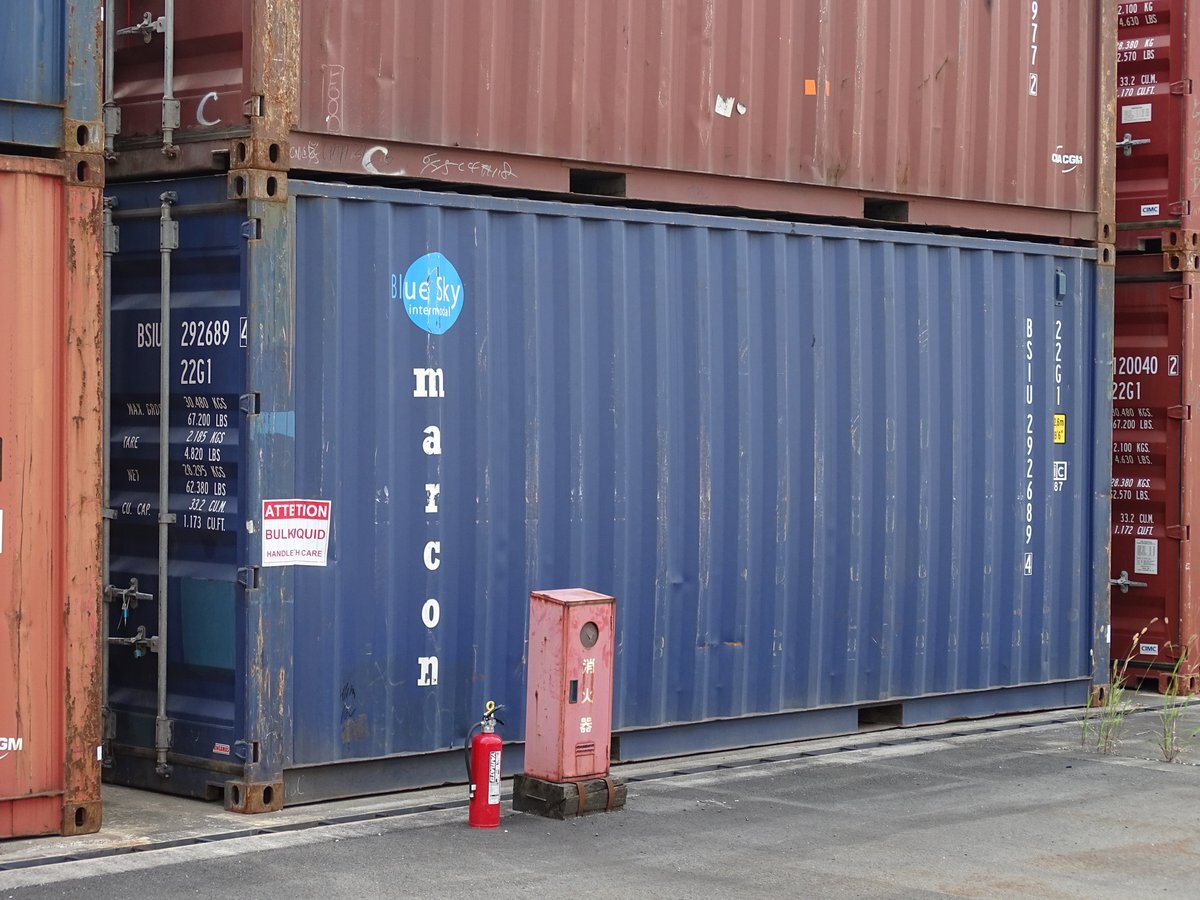
Ninth on the list of container leasing companies is Blue Sky Intermodal. They rank as the second biggest container leasing company in Europe. The company specializes in providing long-term leases of ISO marine containers and related products to shipping lines.
Caru Containers
Year founded: 2000
Headquarters: Hamilton, Bermuda
Container fleet in TEU: $~200,000
Percentage owned of global leasing container fleet: ~1
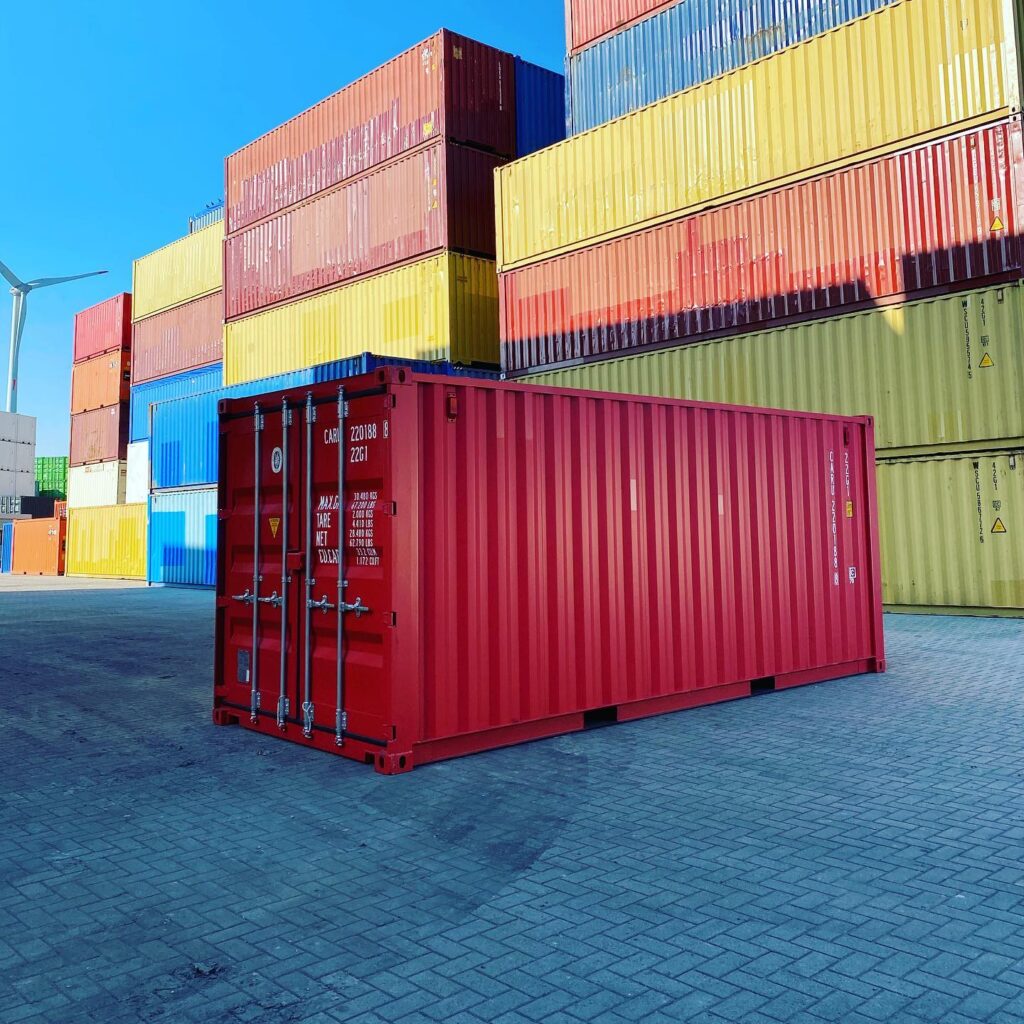
While most of the conglomerates have explored expanding and diversifying their assets and financial decisions, Caru Containers has been focused on a different yet specific goal: sustainability. In fact, their ambitious goal is to reach net zero before 2030. In 2021, one of their main goals was to save 10% on empty shipping emissions, equal to 7.4t CO2e. A 54% reduction was eventually achieved.
“In order to keep this reduction structural, the decision was made to prioritize vessels with cleaner fuels over conventional vessels, even if the costs are higher.” – Source: Caru Sustainability Report 2021
Interestingly, CARU Containers is working on producing its own containers with the goal of creating a closed loop supply chain, or circular production. “This means optimizing the use of scrapped container steel into recycled steel applicable for new container production. By doing so emissions from container production – mostly caused by emissions from virgin steel production – will be reduced and container production will be less dependent on finite resources,” their report tells us.
They are also investigating alternative materials with a lower carbon footprint as well as a lower impact on the depletion of natural resources.
Let’s summarize the key findings here:
-
Long-term leases are the ideal financial setups for leasing companies, especially in tumultuous times.
-
The top companies are not increasing their leasing fleets as much as they did in 2021, but still investing, expanding and diversifying into the industry.
-
Reefers and tanks seem to be gaining popularity, while dry containers remain a vital commodity as always.
-
Expanding or decreasing your fleet size is not always related to your net revenue
-
Owning containers instead of simply managing them gives the leasing company more flexibility and control.
-
Asset-hungry conglomerates like Mitsubishi and COSTCO are noticing the huge potential of the leasing market. They are looking to acquire and/or merge to turn a profit but also gain flexibility in their own shipping needs.
-
Sustainability will soon be a rife consumer demand, which Seacube and CARU in particular are noticing.



